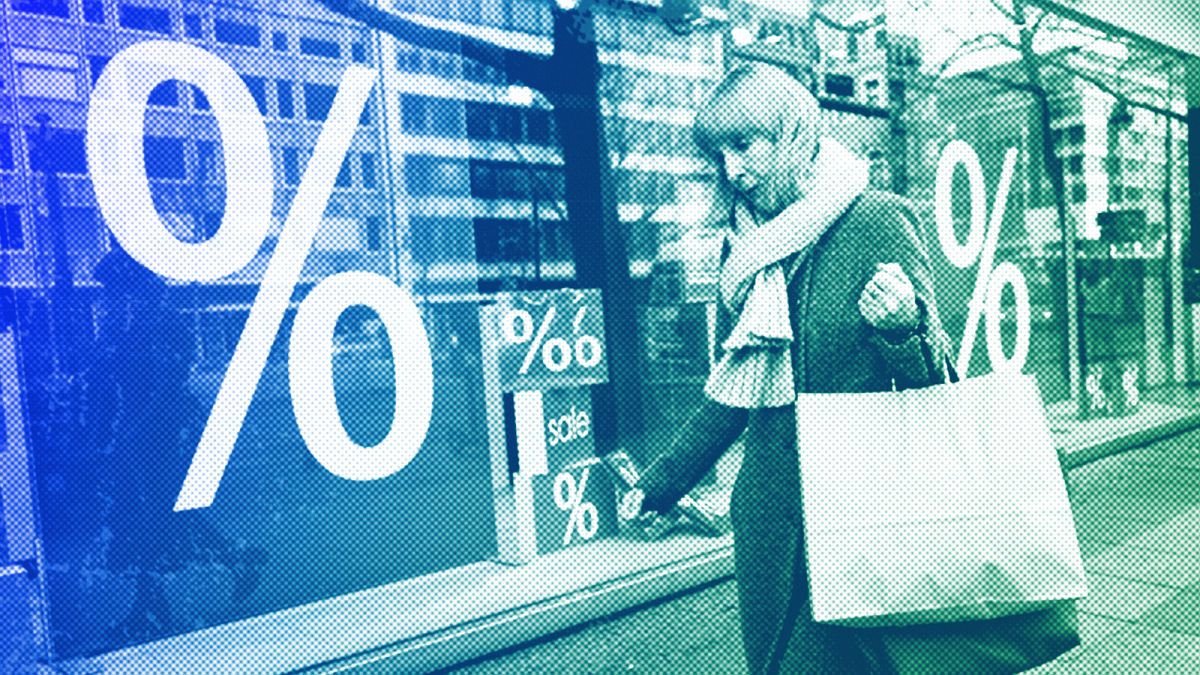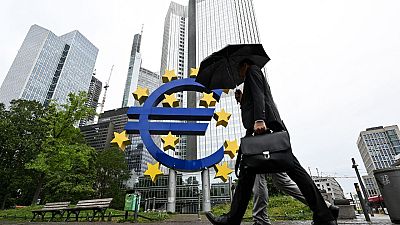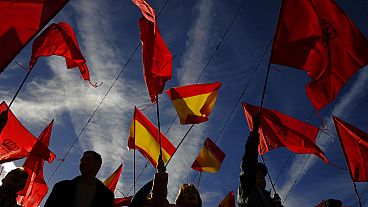While the timing of the recession is difficult to predict, one thing that is for sure is that the downside potential to future economic growth of Europe is real, Osama Rizvi writes.
For those living in the eurozone, rising rents, mortgages and energy prices have created difficult economic conditions with wages hardly meeting outgoing essentials. It certainly feels like a recession — but is it?
The International Monetary Fund (IMF) says that there is no official definition of recession but a general recognition that the term pertains to periods of slow economic growth.
However, us economists and analysts usually define a recession as negative growth in two consecutive quarters.
For example, the eurozone economy contracted by 0.1% between January and March 2023, after it also shrank in the final three months of 2022. This means the eurozone was in a recession.
Meanwhile, the National Bureau of Economic Research (NBER) has a more comprehensive definition, and one that we can relate to: a recession entails a considerable decline in economic growth which is prevalent in all or most sectors of the economy and spans over the course of a few months. This is something that consumers and businesses in Europe can easily see, allowing them to agree that the region might already be fighting with one.
Is Europe in a recession? This is what indicators show
A good place to start is to look at the level of business activity in the economy. One of the indicators that helps us in this regard is HCOB’s Composite Purchasing Manager’s Index, which measures business conditions using different metrics such as new orders, employment, selling prices, purchasing activity and others.
According to the latest figures for the eurozone, the PMI index registered at 47.1 in November. A reading below 50 suggests contraction whereas above means economic expansion. The manufacturing PMI output index shows that the manufacturing activity has remained below 50 for 8 straight months with the latest number coming in at 44.3.
Another indicator of economic health is the lending activity of banks. If more loans are being disbursed, it certainly means that people are confident in the economic prospects of the country/region and therefore engaging in more business activity. A falling number of loans indicate otherwise.
In Europe, loans to businesses were 0.3% lower in October 2023, compared to October 2022, which is the first yearly fall since 2015. Similarly, a rising loan default ratio is another means to track the growth in a country. In Europe, the stress of loan defaults seems to be rising, unfortunately.
Recently, the European Union reduced its growth forecasts for the eurozone economy to 0.6% from 0.8%. The reduction in growth prospects, or seemingly meagre figures of growth, are symbolic of the overall challenges faced by the world in general and Europe in particular.
Rising interest rates, persistently high energy prices and a highly volatile world economy add to these worries. In fact, according to various estimates by banks, higher rates can shave off 1% of gross domestic product (GDP) from the eurozone.
What does the future hold?
With the recent geopolitical tensions, energy prices are expected to remain elevated well into next year. While inflation has tamed a bit it is still way above the five-year moving averages.
In the IMF’s latest economic update, it anticipates a slight recovery for the eurozone in 2024, however, as it expects the GDP growth to average 1.5%. This, however, is based on certain assumptions and the most important one is that the oil and gas prices will remain stable and with the ongoing geopolitical conflicts this cannot be assured.
Wells Fargo said in its recent note that a recession in the eurozone is “increasingly possible, but not yet inevitable”. They do not expect a rate cut — one of the most important indicators and factors in this debate — until June 2024.
On the consumer end, we are not seeing any encouraging spending trend as of today, while retail sales are also down.
Mario Draghi, former president of the ECB, also echoed this concern very recently, while the governor of the Belgian Central Bank also agreed that risks are “tilted to the downside when it comes to the eurozone”.
Other factors and indicators are also concerning. Recently, the slowdown in eurozone business activity “accelerated” due to weak demand in the services sector and the new orders PMI is now at its lowest level in the last 11 years — or since September 2012.
Manufacturing activity shows that new orders fell at the steepest rate since 1997. Some analysts are saying that while the eurozone might be able to avert a full-blown recession, it will still face some “mild bouts” of it.
This also forms a good analogy for what many were calling a “rolling recession” in the US.
All in all, while the timing of the recession is difficult to predict, one thing that is for sure is that the downside potential to future economic growth of Europe is real. At the same time, a plethora of indicators also suggest that a recession in the largest economy in the world, the US, is also due.
Osama Rizvi is an economic and energy analyst with a focus on commodities, macroeconomy, geopolitics, and climate change.
At Euronews, we believe all views matter. Contact us at view@euronews.com to send pitches or submissions and be part of the conversation.





